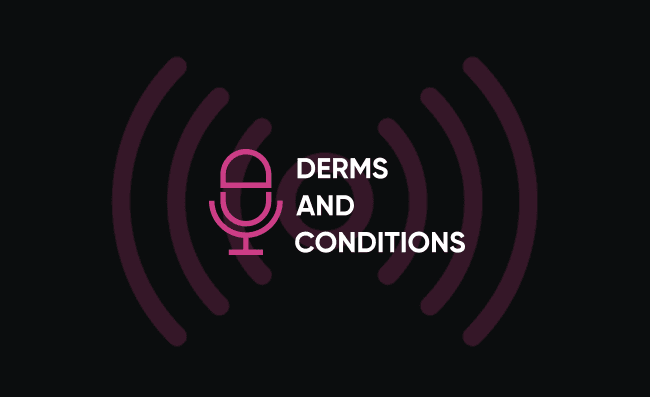Derms and Conditions Podcast Episode 57:
Improving Our Understanding of How New and Established Drugs Work: Let's Start With Our Most Often Used Antibiotic Class
Featuring Christopher Bunick, MD, PhD | Release Date: August 03, 2023
In episode 57 of Derms and Conditions, our host, James Q. Del Rosso, DO, sits down with Christopher Bunick, MD, PHD, an associate professor of dermatology at Yale University School of Medicine who performs specialized dermatologic research utilizing x-ray crystallography and other novel techniques. The 2 discuss research findings surrounding new information on properties that differentiate the activity of antibiotics, with specific data on how narrow spectrum activity with sarecycline differs from the broad-spectrum tetracyclines we use in dermatology. There are new data described by Dr Bunick and his team on how the unique molecular structure of sarecycline targets Cutibacterium acnes (C. acnes) through multiple mechanisms of action, making it less vulnerable to antibiotic resistance.
Dr Del Rosso begins by introducing sarecycline, a major new antibiotic in dermatology, and has Dr Bunick discuss some of his research on the medication. Dr Bunick explains how the recent scientific findings on the biochemistry of sarecycline translate clinically and have allowed us to not only advance our understanding of sarecycline but also other tetracyclines, including minocycline and doxycycline. Drs Del Rosso and Bunick follow this up by agreeing on the importance of dermatologists having a strong understanding of tetracyclines given their prevalence and frequency of use in clinical practice.
Next, they switch focus to C. acnes, and Dr Bunick discusses his new findings on the ribosomal structure of C. acnes through the use of cryo-electron microscopy and how tetracyclines interact with it. Dr Bunick’s research group found that sarecycline binds C. acnes at both the 30S ribosomal subunit and a new additional ribosomal binding site, which had not previously been discovered. In addition, Dr Bunick notes how these variations in the mechanism of action can explain why tetracycline antibiotics have different properties, such as side effect profiles, despite being in the same chemical class. Drs Bunick and Del Rosso further solidify this point by explaining how similar research has established differences between PDE4 inhibitors such as roflumilast.
Finally, they discuss antibiotic resistance in acne and how clinicians can better select therapies. Dr Bunick explains that sarecycline has the lowest rate of antibiotic resistance amongst tetracyclines because it targets C. acnes through 2 ribosomal binding sites and has an mRNA interfering carbon side chain that no other tetracycline possesses. Overall, Drs Bunick and Del Rosso agree that there is substantial scientific evidence on the effectiveness of sarecycline that supports its use by clinicians. Tune in to this episode to learn more about the new developments on antibiotics being discovered at a molecular level in the treatment of acne!
